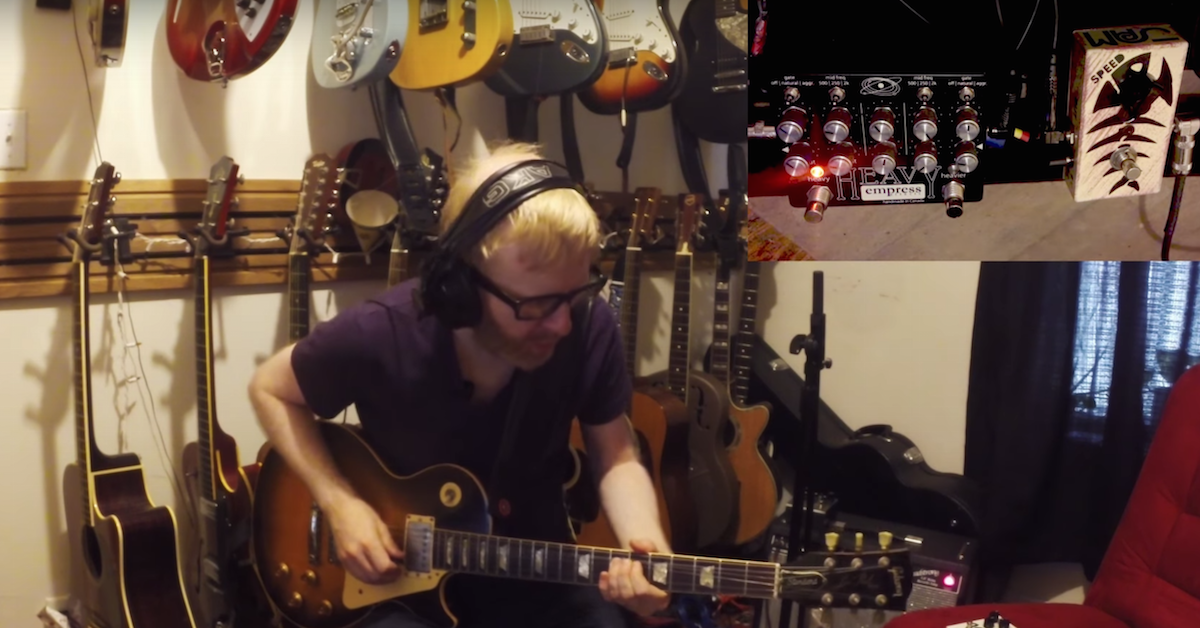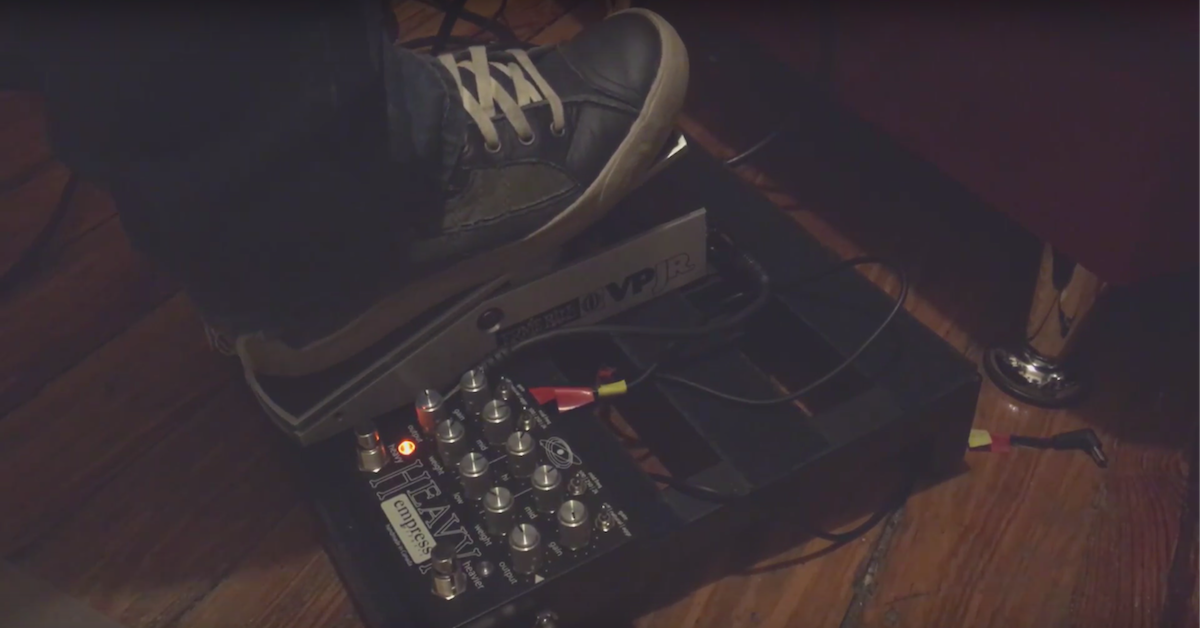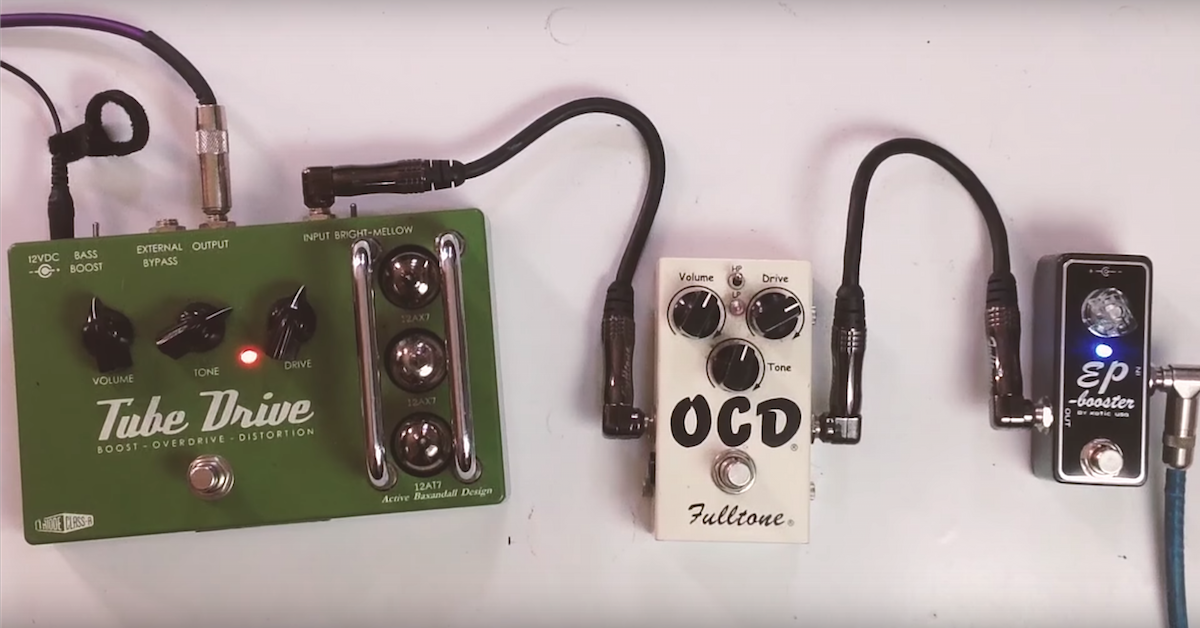How to Dial In a Modern Metal Tone with Misha Mansoor
Hey, what’s up guys? This is Misha from Periphery. I’m over here at Sweetwater. I’m going to talk to you guys about how I go about dialing in a modern metal tone.
So the first thing is gain. I’ve noticed that a lot of people are very tempted to use as much gain as possible. I’ve found that the trick is to use as little as you can get away with. That doesn’t mean too little, because you do want the amp to saturate, but it means not overdoing it, and just trying to find that sweet spot. What I aim for is where the amp really starts to crunch and sustain on palm mutes.
So let’s use channel two on this amp as an example. Oh, and a good rule of thumb for any amp, just start with all of the settings at noon, because if it’s a good amp, it should sound good there, and then you can just tweak from there.
Alright, so this is this amp with all of the settings at noon.
[guitar]
Now, that’s a good starting point, but I do think it doesn’t have a ton of attack, it probably could have a bit more sustain, probably could use a little bit more gain, and there’s a couple of ways we can go about fixing that. One is to just add a little bit more gain, so let’s do that.
[guitar]
See, that’s too much.
[guitar]
Now let’s play with the EQ a little bit. I think I can take the mids down just a little bit, and I’ll probably boost a little bit of high end as well.
[guitar, adjusting EQ]
Now you can hear the tone is getting a bit more defined. I wouldn’t mind a bit more low end, and there’s two ways we can go about doing this. One is the actual low control, but the resonance of the amp can also go up. If your amp has that feature, it’s a super useful way to get some more bottom end without affecting the actual character of the sound.
[guitar, adjusting lows and resonance]
So now I’ve got a lot of weight to the tone, but I do feel like it’s getting a little bit flubby. Now, there’s a really, really easy way to fix this, and what a lot of people don’t necessarily realize is that their favorite metal tones are usually the combination of a boost, a drive, overdrive of some sort, in front of a high gain amp, and that’s exactly what I’m going to do.
So I have the Horizon Devices Precision Drive here, and when you’re running it like this, you want to make sure the drive is pretty much all the way off, or not very far up at all. Keep in mind on this pedal, noon tends to be about max settings, compared to other overdrives, so it’s as if you have to volume and the bright or tone control all the way up.
So let’s hear the difference that this pedal makes with this kind of tone.
[guitar]
That’s off.
[guitar with pedal]
So as you can hear, it’s really tamed and tightened the low end up. This pedal actually has a gate, which is getting rid of any noise that the pedal is actually adding to it, and we’re getting a little bit more bite from the strings. So let’s compare.
[guitar, alternating with and without pedal]
Now, I like that a lot. On this amp, we have another feature, which is super useful, which is a noise gate. So we have the noise gate on the pedal, and the one on the amp. I’m going to activate that right now. That gets rid of all the extraneous noise. So now, you have a lot of gain, you have a super tight sound, but you can get your staccato riffs to be nice and clean.
[guitar, staccato playing]
So if you were ever listening to metal tones, and you’re wondering, “Wow, how can they get so much gain, but then get it to be so tight on the starts and the stops?”
That’s the answer. Noise gates. So the guitar that I’m using for this will also make a bit of a difference, but this is what I consider to be a very, very nice guitar. It has Bare Knuckle pickups in it, which are my favorite pickup brand. I find them to be very clear. This Juggernaut set is sort of a jack-of-all-trades. It works well under gain, clean, mid-gain, or whatever, and I think it sounds fantastic with this rig.
Now, you may be wondering, what is this piece of tape here? Generally speaking, especially when I’m tracking, and I want things to be very tight, I’ll put a piece of tape or something — you’ll sometimes see people put hairbands up here — and that’s just to eliminate any sort of resonant noise that the strings give off. It’ll work against the gate, believe it or not, and add just extra noise in between notes, so as nice as this guitar is, a little cheap piece of tape goes a really long way.
Well, I hope that was informative. If you have any questions about the gear that I’m using here, just contact your Sweetwater sales engineer, and they’ll answer any questions that you have.
Thanks so much for watching, guys.





